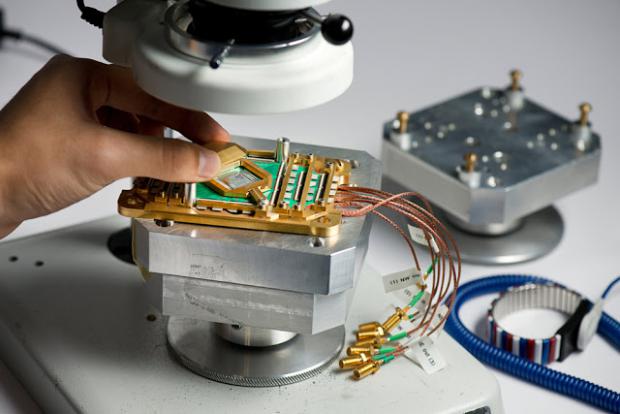
Breaking News
 IT'S OVER: Banks Tap Fed for $17 BILLION as Silver Shorts Implode
IT'S OVER: Banks Tap Fed for $17 BILLION as Silver Shorts Implode
SEMI-NEWS/SEMI-SATIRE: December 28, 2025 Edition
 China Will Close the Semiconductor Gap After EUV Lithography Breakthrough
China Will Close the Semiconductor Gap After EUV Lithography Breakthrough
 The Five Big Lies of Vaccinology
The Five Big Lies of Vaccinology
Top Tech News
 EngineAI T800: Born to Disrupt! #EngineAI #robotics #newtechnology #newproduct
EngineAI T800: Born to Disrupt! #EngineAI #robotics #newtechnology #newproduct
 This Silicon Anode Breakthrough Could Mark A Turning Point For EV Batteries [Update]
This Silicon Anode Breakthrough Could Mark A Turning Point For EV Batteries [Update]
 Travel gadget promises to dry and iron your clothes – totally hands-free
Travel gadget promises to dry and iron your clothes – totally hands-free
 Perfect Aircrete, Kitchen Ingredients.
Perfect Aircrete, Kitchen Ingredients.
 Futuristic pixel-raising display lets you feel what's onscreen
Futuristic pixel-raising display lets you feel what's onscreen
 Cutting-Edge Facility Generates Pure Water and Hydrogen Fuel from Seawater for Mere Pennies
Cutting-Edge Facility Generates Pure Water and Hydrogen Fuel from Seawater for Mere Pennies
 This tiny dev board is packed with features for ambitious makers
This tiny dev board is packed with features for ambitious makers
 Scientists Discover Gel to Regrow Tooth Enamel
Scientists Discover Gel to Regrow Tooth Enamel
 Vitamin C and Dandelion Root Killing Cancer Cells -- as Former CDC Director Calls for COVID-19...
Vitamin C and Dandelion Root Killing Cancer Cells -- as Former CDC Director Calls for COVID-19...
 Galactic Brain: US firm plans space-based data centers, power grid to challenge China
Galactic Brain: US firm plans space-based data centers, power grid to challenge China
DWave next redesign will allow for higher connection density 4000 qubits by late 2018...

It will likely to launch within two years, the machine will again double the number of qubits, to around 4,000. Crucially, it will also provide more-complex connections between qubits, allowing it to tackle more-complicated problems.
"Changing the underlying connectivity is going to be a game-changer," says Mark Novotny, a physicist at Charles University in Prague, who is exploring a D-Wave machine's applications to cybersecurity. "I'm basically drooling hoping for it. It's very exciting."
D-Wave's latest 2000 qubit iteration includes an upgrade that Novotny has been clamoring for. The feature gives more control when different groups of qubits go through the annealing process. In at least one case, D-Wave has shown that this can speed up certain calculations 1,000-fold. For Novotny, the feature is crucial because it will allow his team to "sample" qubits during the process, which opens the door to D-Wave exploring a different type of machine-learning algorithm that could learn to recognize much more complex patterns of cyberattacks.



